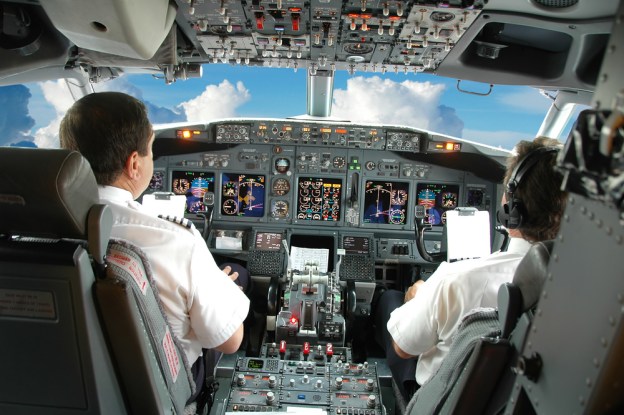 American Airlines is reported to be the first carrier to receive authorization from the Federal Aviation Authority allowing pilots to use iPads “in all phases of flight.” Pilots at United Airlines and Alaska Airlines are also known to be trying out Apple’s device during flights.
American Airlines is reported to be the first carrier to receive authorization from the Federal Aviation Authority allowing pilots to use iPads “in all phases of flight.” Pilots at United Airlines and Alaska Airlines are also known to be trying out Apple’s device during flights.
But don’t get the wrong idea here – they won’t be swiping the screen to take off or tilting the iPad to the right to turn the plane in that direction. According to a ZDNet report, the iPads will be taken on board AA aircraft from this Friday and used to replace the traditional paper-based flight bag, which is essentially a flight manual containing information such as navigation charts and details on how to operate the particular plane you’re flying in (that’s good to know).
An unnamed source told ZDNet that “the airline will begin iPad operations on B-777 aircraft, and then implement across all other fleets.”
The source continued: “Other airlines such as United, Alaska, and UPS are also reviewing this potential, but none have been approved to conduct flight operations in all phases of flight except American. This FAA approval cumulates the results from a six month test period whereby American flew thousands of hours with iPads to test and evaluate the product.”
A paper-based flight bag can consist of as many as 12,000 pages and weigh up to 38 pounds (17kg). The iPad tips the scales at less than 1.5 pounds (under 1kg). In August, United Airlines spelled out the benefits of ditching the old flight bag, saying it would save “nearly 16 million sheets of paper a year which is equivalent to more than 1,900 trees not cut down.”
It also said that lighter aircraft would result in savings of 326,000 gallons of jet fuel a year, thereby reducing greenhouse gas emissions by 3,208 metric tons.
The question needs to be asked though – it’s all very well ditching the heavy paper manuals, but what if the iPad seizes up just as the pilots are using it to find out what to do about the smoke billowing from the left engine? Or are the chances of engine failure and iPad failure happening at exactly the same time just too small to worry about?
[Image: Carlos E. Santa Maria / Shutterstock]

